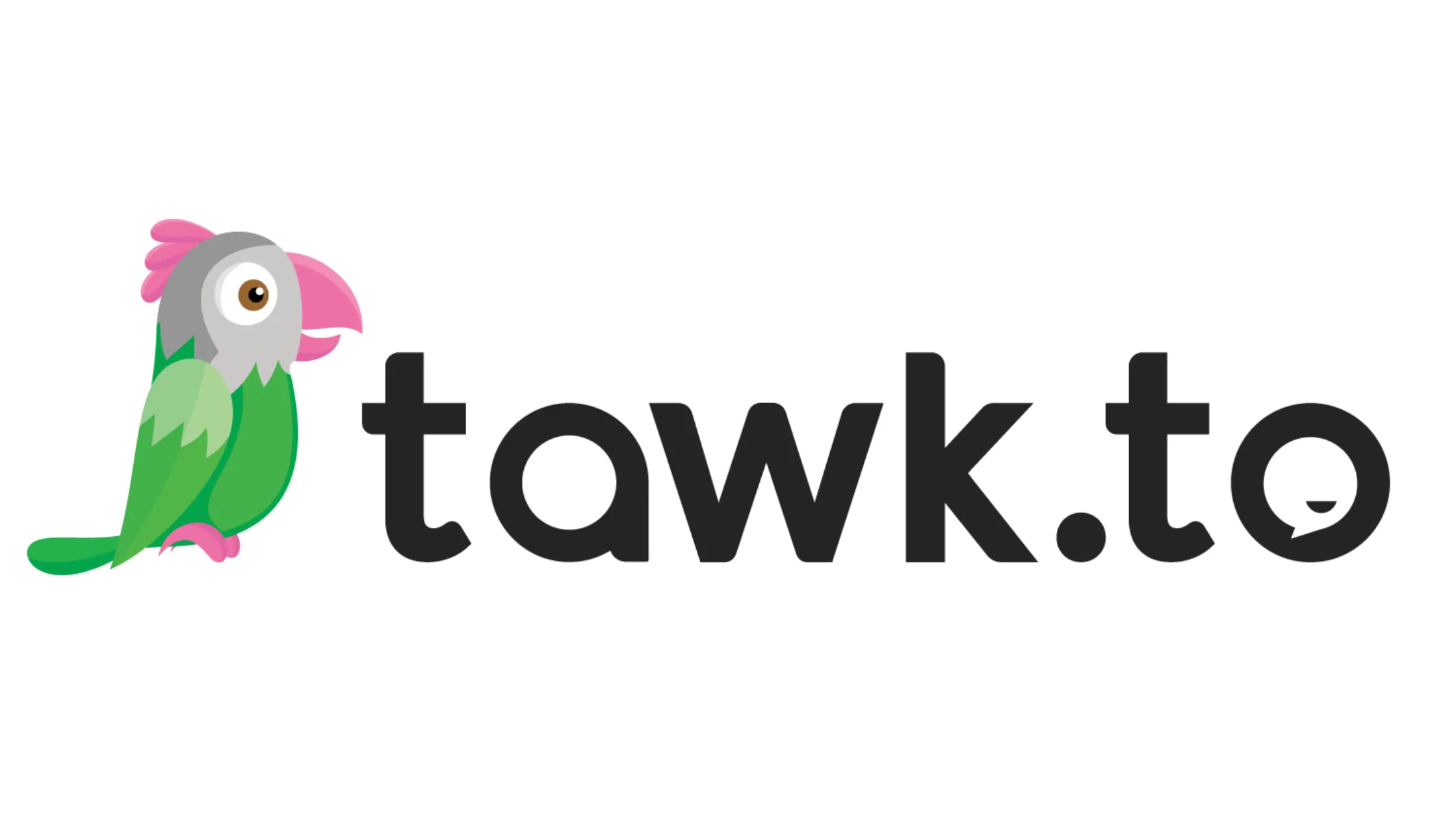
What is Revenue?
Learn the fundamentals of revenue and how it impacts your startup’s growth. Essential insights for founders new to managing revenue.
If you’re a startup founder, revenue is probably one of the most important metrics you’ll obsess over. Without it, your business can’t survive—let alone thrive. But as a first-time founder, you might wonder, "What exactly is revenue, and how do I track it?" In this guide, we’ll break down everything you need to know about revenue, from understanding its basic components to learning how to increase it effectively. By the end, you’ll have a clearer picture of how to manage revenue so that your startup can grow sustainably.
What Is Revenue?
Revenue, in its simplest form, is the money your startup earns from selling goods or services. It’s often referred to as "top-line" because it’s the first thing you'll see on your income statement. Without revenue, it’s impossible to cover expenses, pay employees, or invest in growth.
Types of Revenue
There are several types of revenue to be aware of, depending on your business model:
- Operating Revenue – The core money you make from your main business activities, like selling products or offering services.
- Non-operating Revenue – Money earned outside of your core operations. This could be from investments, grants, or even selling equipment.
- Recurring Revenue – If you’re running a SaaS startup or a subscription-based business, recurring revenue is the money that keeps coming in regularly (think monthly or yearly subscriptions).
- Transaction-based Revenue – Common for e-commerce or marketplaces, this type of revenue is earned whenever a transaction takes place.
Why Revenue Matters for Startups
Revenue is often the most significant indicator of whether your startup is moving in the right direction. Here's why:
- Investor Confidence: Investors want to see that your business can generate consistent revenue. It’s often a key factor when they decide whether to fund your startup.
- Sustainability: Revenue ensures your startup can pay its bills. Without it, you’ll be burning through cash, which can lead to tough financial situations.
- Growth Indicator: As your revenue grows, it usually signals that your customer base is growing too. Revenue growth is often tied directly to how well you’re serving your market.
- Valuation: If you’re looking for an acquisition or preparing for a funding round, your valuation is closely tied to your revenue and growth potential.
How to Calculate Revenue
Calculating revenue is straightforward in theory but can become complex depending on your business model. The basic formula for total revenue is:
Revenue = Number of Units Sold x Price Per Unit
For subscription-based models, use:
Revenue = Number of Subscribers x Subscription Fee
Make sure to track different revenue streams separately so you can analyze which areas of your business are performing best.
Gross Revenue vs. Net Revenue
A common mistake many founders make is confusing gross revenue with net revenue. Here’s the difference:
- Gross Revenue: This is your total sales without any deductions.
- Net Revenue: This is your total sales minus any returns, discounts, or allowances.
As you grow, understanding these distinctions becomes crucial, especially when presenting financials to investors or stakeholders.
Strategies to Increase Revenue
If you’ve established a revenue stream, the next question is, "How do I increase it?" Here are a few proven strategies:
1. Improve Customer Retention
Acquiring new customers is great, but retaining them is even better. Focus on customer success, and you’ll increase recurring revenue through repeat sales.
2. Upsell and Cross-sell
You already have customers—can you sell them more? Upselling involves offering higher-end versions of your product, while cross-selling introduces complementary products.
3. Optimize Pricing
Pricing is both an art and a science. Many startups either underprice their products or services, leaving money on the table. Conduct market research to ensure your pricing aligns with the value you offer.
4. Expand into New Markets
Once you’ve validated your product, consider expanding into new markets or customer segments. This could involve geographic expansion or tapping into new industries.
Revenue Tracking Tools for Startups
For effective revenue management, it’s essential to use tools that can help you stay on top of your numbers. Here are some popular options:
- QuickBooks: Best for general accounting and tracking all kinds of revenue.
- Stripe: Ideal for subscription-based startups, offering recurring payment tracking and analytics.
- ProfitWell: Focuses on SaaS metrics, including recurring revenue and churn.
- Xero: Another excellent accounting tool, particularly useful for smaller startups needing scalability.
These tools will help you avoid manual errors, automate reporting, and keep your revenue organized.
Common Revenue Pitfalls and How to Avoid Them
Revenue is exciting, but there are some common mistakes to watch out for. Here’s how to dodge them:
1. Overestimating Market Size
Many founders assume they’ll capture a large percentage of the market right away, but this is rarely the case. Take time to validate your assumptions with actual sales data before planning massive revenue increases.
2. Ignoring Customer Acquisition Costs (CAC)
You might be earning revenue, but how much did you spend to get it? If your customer acquisition cost is too high, your business could still be unprofitable, even if you have strong revenue numbers.
3. Not Prioritizing Retention
It’s easy to focus on new customers while neglecting existing ones. Don’t forget: It’s cheaper to keep a customer than to find a new one.
The Importance of Recurring Revenue for Startups
One of the most sustainable forms of revenue for a startup is recurring revenue. This is the income you generate regularly, typically through subscription models. For SaaS companies or other digital businesses, recurring revenue is a game changer because it provides more predictability and stability compared to one-time transactions. This is why many investors focus heavily on a startup’s Monthly Recurring Revenue (MRR) and Annual Recurring Revenue (ARR).
Benefits of Recurring Revenue
- Predictability: With recurring revenue, you can forecast your future earnings more accurately. This makes it easier to plan your budget and scale operations without worrying about cash flow issues.
- Customer Retention: Recurring revenue models usually result in higher customer retention. Customers are more likely to stay with a service they’re subscribed to, as long as you continue to provide value.
- Higher Lifetime Value (LTV): Subscription models typically lead to higher customer lifetime value because your customers are paying you over an extended period rather than just once.
- Lower Risk: Having a stable, predictable revenue stream lowers your business's risk. It becomes easier to weather tough economic conditions or industry shifts.
How to Build Recurring Revenue
- Start with a Subscription Model: If your product lends itself to a subscription-based service, this is one of the best ways to create recurring revenue. This model works especially well for SaaS products, but it can also be applied to other industries, like e-commerce (think subscription boxes).
- Provide Continuous Value: For customers to keep paying, they need to feel like they’re receiving ongoing value. Ensure that your product or service continues to evolve, and offer updates or new features that enhance the user experience.
- Offer Tiered Pricing Plans: Different customers have different needs, so offering various pricing tiers can help you capture a wider audience. For example, you could have a basic plan for small businesses and an enterprise plan for larger organizations with more advanced needs.
Monitoring Your Revenue Metrics
Knowing your revenue numbers is essential, but it’s even more important to track the right metrics to understand how well your business is performing. Here are some key revenue metrics that every founder should monitor:
1. Monthly Recurring Revenue (MRR)
This metric shows how much revenue your business is generating every month from subscriptions. It’s a great indicator of your business’s short-term performance and growth.
Formula:MRR = Number of Active Subscribers x Average Revenue Per User (ARPU)
2. Customer Lifetime Value (LTV)
LTV helps you understand how much revenue you can expect from a customer throughout their relationship with your company. Knowing your LTV allows you to calculate how much you can spend on acquiring new customers without losing money.
Formula:LTV = ARPU x Customer Lifetime (in months or years)
3. Gross Margin
Gross margin shows the profitability of your core operations. It’s your revenue minus the cost of goods sold (COGS), expressed as a percentage. A higher gross margin means you have more capital to reinvest into growth.
Formula:Gross Margin = (Revenue - COGS) / Revenue
4. Churn Rate
Churn rate is the percentage of customers who stop using your product or service over a given period. A high churn rate can significantly impact your recurring revenue and growth.
Formula:Churn Rate = (Customers Lost During a Period / Total Customers at Start of Period) x 100
Keeping churn low is crucial for subscription-based models. By improving customer satisfaction, offering excellent support, and ensuring the product meets their needs, you can reduce churn and retain more revenue.
Horizon-Labs.co: Your Partner in Building Revenue-Generating Products
At Horizon-Labs.co, we specialize in helping startups build products that generate real revenue. As founders ourselves, we understand the challenges of balancing growth with development costs. Whether you’re just starting with an MVP or scaling up after product-market fit, our team can accelerate your engineering output so you can focus on what matters most: growing your revenue. Let us help you build better, faster, and more cost-effective tech solutions.
Ready to get started? Contact us at info@horizon-labs.co or schedule a call at horizon-labs.co/contact to see how we can help turn your idea into a revenue-generating product.
Frequently Asked Questions (FAQs) about Revenue:
Q: What is the difference between revenue and profit?
A: Revenue is the total amount of money your startup earns from its sales, while profit is what's left after all expenses are subtracted from your revenue. In other words, revenue is the "top-line" figure, and profit is the "bottom-line" figure. Profit tells you how much your business actually makes after covering costs like production, salaries, and taxes.
Q: How can a startup increase its revenue without raising prices?
A: Startups can increase revenue in several ways without raising prices, including expanding their customer base, upselling or cross-selling additional products or services, improving customer retention to encourage repeat purchases, and entering new markets or geographic areas. Adding new features or subscription tiers can also generate more income from existing customers.
Q: Is all revenue taxed the same?
A: Not necessarily. Different types of revenue may be subject to different tax treatments. For example, revenue from international sales, investments, or grants may have specific tax regulations. It’s crucial to consult with a tax advisor to understand how your various revenue streams will be taxed based on your startup's location and structure.
Q: How does deferred revenue work?
A: Deferred revenue refers to money received by a business for goods or services that have not yet been delivered. It’s common in subscription businesses where customers pay upfront for a service they will use over time. Although the money is in your account, it is considered a liability until the service is fully provided, after which it converts into actual revenue.
Q: What is the role of unit economics in understanding revenue?
A: Unit economics refers to the revenue and costs associated with a single unit of your product or service. Understanding unit economics helps founders see how much profit or loss is generated per sale. This is crucial for scaling your startup, as it shows whether your business model is viable when you expand.
Q: Can revenue be negative?
A: No, revenue itself cannot be negative. However, your net income can be negative if your costs exceed your revenue. This situation, often referred to as a "loss," can occur during the early stages of a startup as you invest heavily in growth, marketing, or product development before your revenue fully ramps up.
Q: How does customer churn affect revenue?
A: Customer churn directly impacts your revenue by reducing your recurring income. High churn rates mean fewer customers are renewing their subscriptions or making repeat purchases, which can significantly diminish your recurring revenue and slow your startup’s growth. Addressing churn by improving product quality, customer support, and user experience is key to maintaining a healthy revenue stream.
Q: Why is revenue forecasting important for startups?
A: Revenue forecasting helps startups plan for the future by predicting how much income they can expect over the next quarter or year. This is crucial for budgeting, planning growth initiatives, securing funding, and managing cash flow. Accurate revenue forecasting also helps you make strategic decisions about hiring, marketing, and product development.
Q: How do payment terms affect revenue recognition?
A: Payment terms dictate when a startup can recognize revenue. For example, if you offer 30-day payment terms, you may not recognize the revenue until the payment is received, even if the sale has already been made. Proper revenue recognition is essential for financial reporting, especially when dealing with investors or tax authorities.
Q: What’s the difference between gross revenue and net revenue?
A: Gross revenue is the total income a business generates before any deductions, such as refunds, discounts, or allowances. Net revenue, on the other hand, is the income left after subtracting those deductions. Net revenue gives a clearer picture of the actual money your business has earned from its operations.
Q: How do seasonal businesses manage revenue fluctuations?
A: Seasonal businesses often experience revenue fluctuations based on demand cycles. To manage this, many build up cash reserves during peak seasons to cover expenses during off-seasons. Diversifying revenue streams or offering year-round services can also help smooth out these fluctuations. Accurate forecasting and budgeting are critical for sustaining operations during low-revenue periods.
Q: What is revenue diversification, and why is it important?
A: Revenue diversification is the practice of generating income from multiple sources or business models, reducing reliance on a single revenue stream. This is important because it helps protect your business from market shifts or changes in customer demand. Diversifying revenue also allows startups to experiment with new products or services without jeopardizing their core business.
Q: How can revenue-sharing models benefit startups?
A: In a revenue-sharing model, your startup shares a portion of its income with partners or stakeholders, often in exchange for their services or investment. This model can benefit cash-strapped startups by allowing them to grow without taking on additional debt or giving up equity. It also aligns incentives with partners, as their success is tied directly to your startup's revenue growth.
Q: What’s the difference between recognized revenue and earned revenue?
A: Recognized revenue refers to income that is recorded in your financial statements once certain conditions, such as delivery of goods or services, are met. Earned revenue is more general and refers to money that your business has generated. In certain accounting methods, you may "earn" revenue but not "recognize" it until the service is fully delivered or payment is received.
Q: Can a startup be profitable without generating significant revenue?
A: In rare cases, a startup can be profitable with low revenue if its operating costs are extremely low, allowing for a high margin. However, most startups need to grow their revenue to achieve long-term profitability. For early-stage companies, profitability often takes a backseat to growth, as they focus on building market share and acquiring customers.
Q: How do different pricing strategies impact revenue?
A: Your pricing strategy can significantly affect how much revenue your startup generates. For example, a low-cost, high-volume strategy may bring in more revenue quickly, but with smaller margins. On the other hand, premium pricing can result in fewer sales but higher revenue per unit. Startups often experiment with different pricing models to find the optimal balance between customer acquisition and profitability.
Q: What role do customer acquisition costs play in revenue growth?
A: Customer Acquisition Cost (CAC) is the amount of money you spend to acquire a new customer. If your CAC is too high relative to the revenue a customer generates, it can stifle growth. It’s essential to balance CAC with the lifetime value (LTV) of your customers to ensure that your business remains profitable and can scale its revenue effectively.
Q: How does deferred revenue affect cash flow?
A: Deferred revenue can improve short-term cash flow because you receive payment before delivering the service or product. However, it also represents a liability until the service is fulfilled. While deferred revenue boosts your cash position in the short term, you'll need to deliver on your promises to avoid long-term issues or dissatisfied customers.
Q: What’s the difference between revenue growth and profitability growth?
A: Revenue growth refers to the increase in your business’s income over time, whereas profitability growth looks at how much of that revenue turns into actual profit. It’s possible for a startup to have rapid revenue growth but still struggle with profitability if its costs are too high. Managing both revenue and expenses is critical for building a sustainable business.
Whether you're validating an idea, scaling an existing product, or need senior engineering support—we're happy to talk through it. No pitch, just a conversation. From MVPs to AI integrations, we've shipped 60+ products since 2019. Tell us what you're building and we'll share how we can help.
Need Developers?
We help companies build ideas into apps their customers will love (without the engineering headaches).
















For Startups & Founders
We've been founders ourselves and know how valuable the right communities, tools, and network can be, especially when bootstrapped. Here are a few that we recommend.

Mistakes to Avoid When Building Your First Product
Learn the key mistakes founders make when building their first product—and how to avoid them for a faster, smoother launch.
Read more
The Rise of AI in Product Development: What Startups Need to Know
Learn how AI is transforming product development for startups. From MVPs to scaling, here’s what founders need to know in today’s AI-driven world.
Read more
No-Code vs. Custom Development: Which is Right for Your Startup?
Weighing no-code vs. custom development? Learn which is right for your startup depending on stage, budget, and product complexity.
Read more
What is Mixpanel?
Learn how Mixpanel helps startups track user behavior to improve products and accelerate growth with clear data-driven insights.
Read more
How Tawk.to Can Boost Your Startup’s Customer Support Game
Learn how Tawk.to can benefit startups by enhancing customer support and engagement. Perfect for early-stage founders!
Read more
Grow Your Startup With Anthropic's AI-Powered Tools
Discover how Anthropic's cutting-edge AI tools can accelerate your startup's success. Learn about their benefits and see why they can be trusted by startups.
Read more
What is Data-Driven VC?
Learn what a data-driven VC means and how such investors can benefit your startup’s growth and fundraising journey.
Read more
What is Blockchain?
A beginner-friendly guide on blockchain for startup founders, covering key concepts, benefits, challenges, and how to leverage it effectively.
Read more
What is Cybersecurity?
Learn cybersecurity basics tailored for startup founders. Understand key risks, best practices, and how to protect your startup from tech threats.
Read more
What is Seedcamp?
Learn what Seedcamp is, how its European seed fund and accelerator program work, and how founders can use its capital, mentorship, and network to scale their st
Read more
What is AngelList?
AngelList is a prime platform connecting startup founders to investors, talent, and resources to accelerate early-stage growth.
Read more
What is 500 Startups?
Learn what 500 Startups (now 500 Global) is, how its accelerator and seed fund work, and when founders should consider it—plus tips for early-stage startups.
Read more.png)